
The Suermondt-Ludwig-Museum is an art museum in Aachen, Germany. Founded in 1877, its collection includes works by Aelbrecht Bouts, Joos van Cleve, Anthony van Dyck, Otto Dix and Max Beckmann.

The Suermondt-Ludwig-Museum is an art museum in Aachen, Germany. Founded in 1877, its collection includes works by Aelbrecht Bouts, Joos van Cleve, Anthony van Dyck, Otto Dix and Max Beckmann.
The Aachener Museumsverein (Aachen museum association) was created in 1877, and in 1883 a city museum was opened in the Alte Redoute (Old Redoubt) building. It was named the Suermondt Museum, after the founder Barthold Suermondt, who gave 105 paintings from his collection to the city, as well as those from the collection of his sister-in-law Adèle Cockerill. [1] This collection, together with many other works which were later sold to Berlin, had been on display in the Suermondt Gallery in Aachen already before the museum was established. [2]
In 1901, the museum moved to the Villa Cassalette , originally owned by the Cassalette family which had acquired fortune through the Aachener Kratzenfabrik Cassalette , which produced raising cards. Over the next decades, the building was slowly extended to house the ever growing museum collection, interrupted by WWII when the collection was stored for safe-keeping in the Albrechtsburg in Meissen. About 200 paintings were missing after the war, but the museum recently recovered two flower paintings; Flowers in a Glass Vase and Flowers in a Wan-Li Vase .
The most recent expansion was in 1992 to 1994. Major gifts were received from Anton Ignaz van Houtem and Franz Johann Joseph Bock . [1]
In 1977, the name of the museum was changed to Suermondt-Ludwig-Museum to honour Irene and Peter Ludwig , art collectors who donated a significant part of their collection of art (medieval to modern) to the museum that year, after having given permanent loans from 1957 on. [1]

The family Cassalette, rich factory owners in Aachen, asked the architect Eduard Linse to design a city palace in a Renaissance Revival architecture style, inspired by Venetian palaces. The interior of the Villa Cassalette was richly decorated with murals in the Pompeian style, stucco cassettes on the ceilings, and sculptures. Many small changes and extensions were made when the building became a museum in 1901 and afterwards; but much of the original interior has been restored or made visible again since. In 1992-1994, the architecture company Busmann & Haberer designed a large extension, built at the left side of the Villa. [3]
The oldest pieces in the collection are German sculptures from the 12th to 16th century. This includes works by Tilman Riemenschneider, Heinrich Douvermann and Arndt van Tricht. Amongst the earliest paintings in the collection is an Adoration of the Magi by the Master of the Glorification of the Virgin and a work by Joos van Cleve. Paintings from the 16th century include a Judith by Lucas Cranach the Elder, an Ecce Homo and Mater Dolorosa Diptych by Aelbrecht Bouts and a Mary Magdalen by Cornelis Engebrechtsz. Major artists from the 17th century who are represented here include from Spain Francisco de Zurbarán, Luis de Morales and Jusepe de Ribera and from Italy Bartolomeo Manfredi. The large collection of paintings from Flanders and the Netherlands shows works by Anthony van Dyck, Jacob Jordaens, Frans Snyders, Jacob Isaacksz van Ruisdael, Frans Hals, Willem Claeszoon Heda, Willem Kalf, Joseph de Bray and Jan Boeckhorst.
The modern art collection is largely restricted to artists living or working in Germany, including internationally known ones like Alexej von Jawlensky, Otto Dix, Max Beckmann, August Macke and Andreas Achenbach.
Other disciplines on display include a large collection of glass painting, 10,000 works of graphic art by artists like Albrecht Dürer, Rembrandt and many others, Flemish tapestries, and works of goldsmiths. [4]
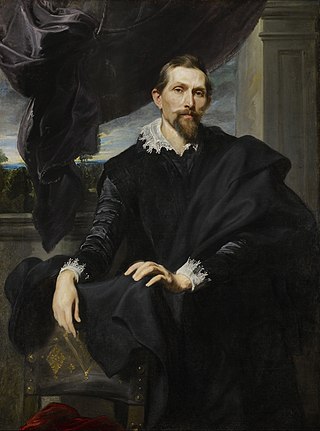
Frans Snyders or Frans Snijders was a Flemish painter of animals, hunting scenes, market scenes, and still lifes. A versatile artist, his works depict all sorts of foods, utensils and tableware and wide assortment of animals. He was one of the earliest specialist animaliers and he is credited with initiating a wide variety of new still-life and animal subjects in Antwerp. His hunting scenes and still lifes engage the viewer with their dramatic and dynamic effects. He was a regular collaborator with leading Antwerp painters such as Peter Paul Rubens, Anthony van Dyck, Jacob Jordaens and Abraham Janssens.

Willem Claeszoon Heda was a Dutch Golden Age artist from the city of Haarlem devoted exclusively to the painting of still life. He is known for his innovation of the late breakfast genre of still life painting.

The Alte Pinakothek is an art museum located in the Kunstareal area in Munich, Germany. It is one of the oldest galleries in the world and houses a significant collection of Old Master paintings. The name Alte (Old) Pinakothek refers to the time period covered by the collection—from the fourteenth to the eighteenth century. The Neue Pinakothek, re-built in 1981, covers nineteenth-century art, and Pinakothek der Moderne, opened in 2002, exhibits modern art. All three galleries are part of the Bavarian State Painting Collections, an organization of the Free state of Bavaria.

Pieter Claesz was a Dutch Golden Age painter of still lifes.

The Thyssen-Bornemisza National Museum, or simply the Thyssen, is an art museum in Madrid, Spain, located near the Prado Museum on one of the city's main boulevards. It is known as part of the "Golden Triangle of Art", which also includes the Prado and the Reina Sofía national galleries. The Thyssen-Bornemisza fills the historical gaps in its counterparts' collections: in the Prado's case this includes Italian primitives and works from the English, Dutch and German schools, while in the case of the Reina Sofía it concerns Impressionists, Expressionists, and European and American paintings from the 20th century.
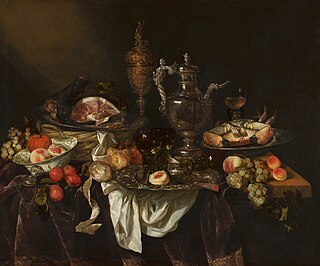
Abraham Hendriksz van Beijeren or Abraham van Beyeren was a Dutch Baroque painter of still lifes. Little recognized in his day and initially active as a marine painter, he is now considered one of the most important painters of still lifes, and still lifes of fish and so-called 'pronkstillevens', i.e. sumptuous still lifes of luxurious objects.

Joos van Cleve was a leading painter active in Antwerp from his arrival there around 1511 until his death in 1540 or 1541. Within Dutch and Flemish Renaissance painting, he combines the traditional techniques of Early Netherlandish painting with influences of more contemporary Renaissance painting styles.

Willem Kalf was one of the most prominent Dutch still-life painters of the 17th century, the Dutch Golden Age. We first get acquainted with Willem Kalf through Arnold Houbraken, in his Groot Schilderboek, who speaks very highly of him. In fact, Kalf was a highly regarded and celebrated artist during his own lifetime. This was due to his extensive art knowledge and what we gain from Houbraken, his affable personality. His claim to fame now rests mostly on his mature still lifes, pronkstilleven in Dutch, which feature the most exotic and luxurious objects. This can be seen in for example, Still life with nautilus beaker and porcelain lidded bowl from 1662, which became an iconic piece of western art.
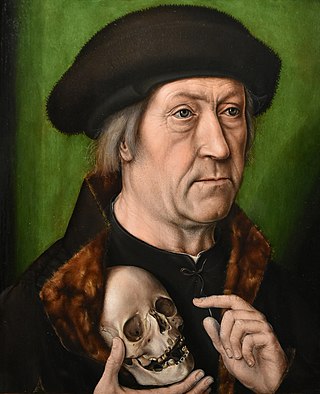
Aelbrecht Bouts was a Flemish painter of the Early Netherlandish era. His first name is sometimes spelled ‘Albert’, ‘Aelbert’ or ‘Albrecht’. He was born into a family of painters in Leuven. Aelbrecht’s father was Dieric Bouts the Elder, and his brother was Dieric Bouts the Younger. Jan Bouts, son of Dieric Bouts the Younger, also became a painter. Dieric Bouts the Younger inherited his father’s shop in 1475, while Aelbrecht established his own workshop, also in Leuven. Whereas Dieric the Younger continued in his father's style, Aelbrecht developed his own unmistakable style with strong colors, rich texture and fine details. He died in Leuven.
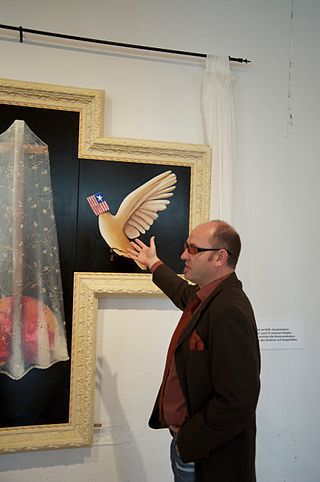
Ralf Metzenmacher was a German painter and designer. He was an exponent and pioneer of Retro-Art, a synthesis between art and product design. Metzenmacher saw his Retro-Art technique as a revitalization of 17th century still life painting and as a further development of pop art.

Museum Mayer van den Bergh is a museum in Antwerp, Belgium, housing the collection of the art dealer and collector Fritz Mayer van den Bergh (1858–1901). The major works are from the Gothic and Renaissance period in the Netherlands and Belgium, including paintings by Pieter Brueghel the Elder.

The Landesmuseum Mainz, or Mainz State Museum, is a museum of art and history in Mainz, Germany. In March 2010 it reopened in full after an extensive renovation.
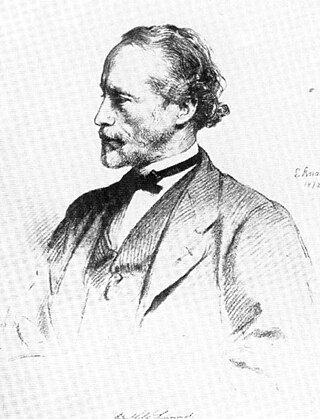
Barthold Suermondt was a German entrepreneur, banker, philanthropist, and art collector, of Dutch-Huguenot heritage.

Flowers in a glass vase on a partly draped stone ledge is a circa 1667 floral painting by Nicolaes van Verendael in the collection of the Suermondt-Ludwig-Museum.
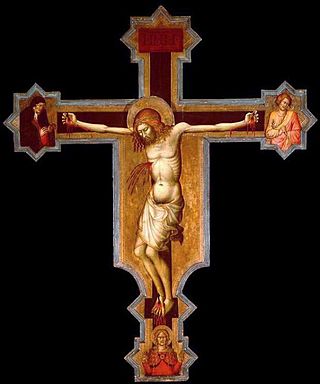
The Museum & Gallery, Inc. is currently located on the campus of Bob Jones University in Greenville, South Carolina. It was established in 1951, and focuses on sacred art, mainly European Old Master paintings, but also includes smaller collections of sculpture, furniture, architectural elements, textiles, Greek and Russian icons, and ancient artifacts. As of 2017, the museum is closed for a planned move to downtown Greenville, SC.
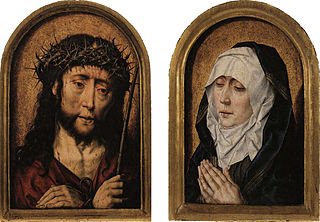
The Ecce Homo and Mater Dolorosa Diptych consisted of two small oil-on-panel paintings usually attributed to the Early Netherlandish artist Aelbrecht Bouts produced between 1491 – 1520. For many years they formed the wings of a hinged devotional diptych, but are now broken apart. Although their exact dating is unknown, the Ecce Homo panel, portraying Jesus bound and crowned with thorns, is thought to have been painted after 1491, while the Mater Dolorosa panel presents the Virgin Mary as Our Lady of Sorrows, and was painted after 1517. Both panels measure 45.5 x 31 cm, although the Mater Dolorosa is slightly larger at 31.1 cm wide. They are in the collection of the Suermondt-Ludwig-Museum, Aachen, Germany, where they are hung alongside each other.

The Blackcurrant Pie is a 1641 still life painting by the Dutch artist Willem Claesz. Heda. It is now in the Musée des Beaux-Arts of Strasbourg, France. Its inventory number is 1745.
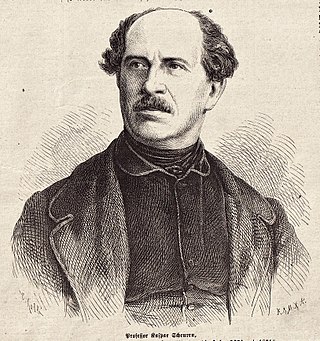
Caspar Johann Nepomuk Scheuren was a German painter and illustrator.

Hartmut "Hacky" Ritzerfeld was a German painter of neo-expressive figurative images.